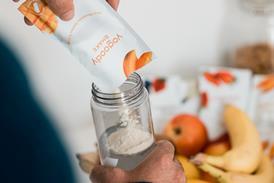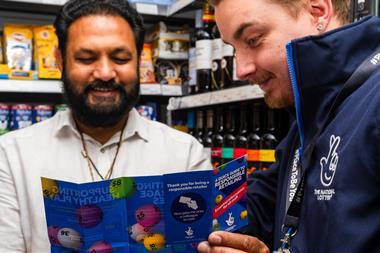Eyes are on the supply chain when home's the place to party
There is the real prospect that this Christmas could be as big as last year's millennium-fuelled peak according to Bass sales director John Holberry.
This would catch out the pessimists who are predicting a decline on the 1999 bonanza on the grounds that the partying euphoria has burned out.
Last year ale and lager sales were up 12% in November and December over the same period in 1998 and the sector has continued to perform 10% ahead this year. This is against a background of 4% growth over the last five years.
Holberry predicts sales this season could be on a par with 1999, or even better.
He says people stayed at home last year because of exorbitant hotel prices. They discovereed the enjoyed celebrating at home and could do the same again.
He adds competition between retailers means the prices will be as low and as aggressive as last year.
"It is quite a bullish market and there will be a lot of price activity, but I don't think retailers are as optimistic. And if they think the market is slowing they will adjust their prices to gain more share."
His concern is that there are pinch points in the supply chain. "The brewers have become more efficient so they are stretched at Christmas, at the same time there is limited capacity at the regional distribution centres and there is limited space at store level."
This theme was echoed by all the major brewers. Interbrew sales director Steve Kitching says: "The supply chain will be crucial. There has to be the same attention to detail as there was last year. We must get everything right.
"The millennium showed there was an opportunity to expand drinks consumption.
"We are taking last year as a template and focusing on what we learned. The trade cannot afford to have space used by brands not part of the Christmas drive. Last year there was a common purpose. Everyone recognised we had to get the best out of the supply chain."
It also accentuated emerging trends. Multipacks increased their share of the off-trade beer business from 44% in 1998 to 52%. The biggest beneficiaries of this were the top 10 beer brands. In 1997 they commanded 30% of the market, at the end of last year the figure had climbed to 48%.
Kitching says: "The big issue at Christmas is the need to change the traditional range because shoppers behave differently. They trade up and shift to 24 packs. We are putting the emphasis on our three big cross category brands, Stella Artois, Boddingtons and Heineken Cold Filtered and we are working with retailers to secure major display features."
Much was made of the success of premium mixed spirits and wine but Robin Alexander managing director of Scottish Courage points out: "Last Christmas beer achieved the greatest actual value growth of any alcohol category."
But the consumption was by heavy beer users attracted by the major deals and the industry failed to attract millions of potential light buyers to the beer category. "This group is easy to push into wine or premixed spirits so it is imperative that retailers run some four pack deals in November and December, " says Alexander.
Scottish Courage marketing director Brian Sharp is looking for big features instore backed by point of sale and key brands will be backed by multi-million pound budgets.
{{FOCUS SPECIALS }}
Close menu
- Home
- Retail & Wholesale
-
Products & Suppliers
- Back to parent navigation item
- Products & Suppliers
-
Product Categories:
- Back to parent navigation item
- Product Categories:
- Alcoholic drinks
- Bakery
- Cereals & breakfast
- Cheese
- Chicken & poultry
- Chocolate
- Confectionery
- Crisps, nuts & snacks
- Dairy
- Fish
- Fresh produce
- Frozen
- Household
- Meat
- Own Label
- Sauces & condiments
- Seasonal
- Soft drinks
- Vaping
- Vegan & plant-based
- World foods
- Suppliers
- People
- Reports & Data
-
Topics A-Z
- Back to parent navigation item
- Topics A-Z
-
Popular topics:
- Back to parent navigation item
- Popular topics:
- Cost of living crisis
- Crime
- Deposit Return Schemes
- Finance
- Government & Regulation
- Health
- Inflation
- Loyalty
- Marketing
- Mergers & Acquisitions
- New Product Development
- Sourcing
- Supply chain
- Sustainability & environment
- Technology
- Ultra Processed Foods
- Vaping
- A-Z all topics
- Content by type:
- Events
- Ask iA (beta)
- Subscribe now
Sign in to comment on this article
Not logged in before? Register for FREE guest access today.
You will be able to:
- Read more stories
- Receive daily newsletters
- Comment on stories
Advert
















No comments yet